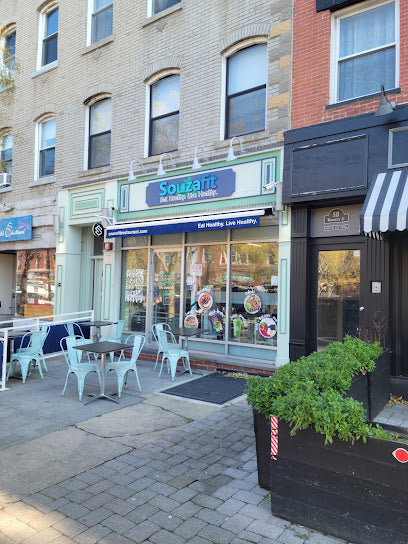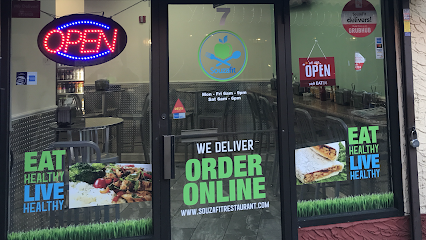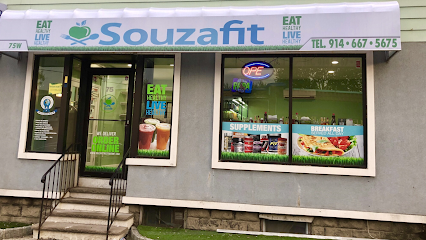Feeding a large family can feel like a full-time job. With busy schedules, different taste preferences, and varying dietary needs, meal prep can be the key to saving time, cutting costs, and ensuring everyone in your household eats well-balanced, nutritious meals. Let’s dive into an in-depth guide on how to prepare healthy meals for large families with actionable tips, detailed strategies, and practical examples to simplify your routine.
Why Meal Prep Works for Large Families
Meal prepping isn’t just about making life easier; it’s about bringing structure and efficiency into your daily life. Here’s why it’s especially beneficial for large families:
- Save Time: Spend one day preparing meals and enjoy hassle-free weekdays. No more last-minute cooking or extended clean-up sessions.
- Save Money: Avoid the temptation of takeout or unplanned grocery purchases by sticking to a pre-determined shopping list.
- Ensure Balanced Nutrition: Planning ahead helps you create nutrient-rich meals that cater to the whole family.
- Reduce Food Waste: Use up ingredients efficiently and repurpose leftovers for creative new meals.
- Create Consistency: Establish predictable meal patterns, so your family knows what to expect.
For large families, these benefits can drastically reduce the mental and physical load of daily meal planning and preparation.
Step-by-Step Guide to Healthy Meal Prep for Large Families
1. Create a Detailed Weekly Meal Plan
Start by organizing a comprehensive meal plan that includes all meals and snacks for the week. Break it down into categories:
- Breakfasts: Think grab-and-go options like egg muffins, overnight oats, or smoothie packs.
- Lunches: Include sandwiches, wraps, or salads pre-packed in containers for easy access.
- Dinners: Aim for dishes that are easy to make in bulk, like casseroles, stir-fries, or sheet-pan meals.
- Snacks: Incorporate a mix of healthy choices like trail mix, veggie sticks, or homemade granola bars.
Pro Tip: Use a whiteboard or a shared digital calendar to display the plan for the whole family. This keeps everyone informed and prevents unnecessary kitchen chaos.
2. Develop a Strategic Shopping List
To make your grocery shopping efficient, create a categorized list:
- Proteins: Chicken breasts, lean ground turkey, tofu, or beans.
- Carbs: Brown rice, whole-grain pasta, or quinoa.
- Vegetables and Fruits: Focus on seasonal, budget-friendly options.
- Snacks: Raw nuts, unsweetened yogurt, and whole-grain crackers.
Check your pantry first to avoid buying duplicates and consider shopping in bulk for cost-effective staples like rice, lentils, and oats.
3. Batch Cooking: Maximize Efficiency
Dedicate a few hours to cook large quantities of food. Some practical examples include:
- Proteins: Grill a dozen chicken breasts, bake several pounds of salmon, or slow-cook shredded beef for tacos and sandwiches.
- Grains: Cook a big pot of quinoa or brown rice and portion it into containers for sides or bowls.
- Vegetables: Roast multiple trays of carrots, broccoli, and sweet potatoes seasoned differently for variety.
Batch cooking allows you to mix and match ingredients for meals throughout the week, keeping things fresh and exciting.
4. Prep for Specific Meals
Take the guesswork out of busy evenings by assembling full meals ahead of time. For example:
- Breakfast: Prepare individual jars of overnight oats with various toppings like berries, nuts, and seeds.
- Lunch: Layer salads in mason jars to keep ingredients fresh—start with the dressing at the bottom and greens at the top.
- Dinner: Assemble casseroles like lasagna or enchiladas and freeze them until needed.
5. Store and Label Everything
Proper storage ensures your meals stay fresh and organized:
- Use Clear Containers: Transparent, stackable containers help you see what’s inside without opening them.
- Label with Dates: Clearly label each container with the meal name and preparation date.
- Divide into Portions: Portion meals into individual servings to make reheating quick and easy.
For large families, consider dedicating specific fridge shelves for breakfast, lunch, and dinner items to streamline access.
6. Involve the Entire Family
Make meal prepping a family activity to share the workload and teach valuable life skills:
- Younger kids can wash produce, pack snacks, or measure ingredients.
- Older children can help chop veggies, portion meals, or prepare simple recipes.
- Spouses or partners can assist with shopping or batch cooking.
Working together not only lightens the load but also fosters a sense of teamwork.
Advanced Meal Prep Tips for Large Families
- Use Freezer-Friendly Recipes: Double up on recipes like soups, stews, and casseroles that freeze well for emergencies or lazy nights.
- Rotate Themes: Plan themed nights like "Mexican Monday" or "Italian Thursday" to simplify decisions and add fun.
- Pre-Chop Ingredients: If batch cooking isn’t possible, pre-chop veggies and marinate proteins for quicker assembly during the week.
- Make Use of Kitchen Gadgets: Slow cookers, air fryers, and instant pots can significantly speed up prep time.
Sample Meal Prep Plan for Large Families
Here’s a more detailed breakdown of a week-long plan:
- Monday:
- Breakfast: Egg muffins with spinach and cheese.
- Lunch: Chicken Caesar wraps with whole-grain tortillas.
- Dinner: Baked salmon with roasted sweet potatoes and steamed green beans.
- Tuesday:
- Breakfast: Smoothie packs with spinach, berries, and protein powder.
- Lunch: Turkey and avocado sandwiches with a side of baby carrots.
- Dinner: Taco bowls with brown rice, black beans, ground turkey, and salsa.
- Wednesday:
- Breakfast: Overnight oats topped with banana and almond butter.
- Lunch: Pasta salad with cherry tomatoes, cucumbers, and a light vinaigrette.
- Dinner: Stir-fried chicken and broccoli served over quinoa.
- Thursday:
- Breakfast: Greek yogurt parfaits with granola and fresh fruit.
- Lunch: Hummus and veggie wraps with apple slices.
- Dinner: Baked chicken thighs with mashed potatoes and roasted zucchini.
- Friday:
- Breakfast: Whole-grain toast with avocado and poached eggs.
- Lunch: Leftover taco bowls.
- Dinner: Homemade pizza with whole-wheat crust and assorted veggie toppings.
- Saturday:
- Breakfast: Pancakes with fresh berries and maple syrup.
- Lunch: Grilled chicken salad with balsamic dressing.
- Dinner: Spaghetti with turkey meatballs and a side of garlic bread.
- Sunday:
- Breakfast: Bagels with cream cheese and sliced cucumber.
- Lunch: Leftovers from the week.
- Dinner: Soup and sandwich night with tomato soup and grilled cheese.
The Impact of Meal Prep on Your Family’s Well-Being
By adopting a structured meal prep routine, you’re not only saving time and money but also creating an environment where healthy eating becomes second nature. For large families, this shift can improve health outcomes, reduce stress, and even strengthen family bonds as everyone works together to create delicious, nutritious meals.
Start Your Meal Prep Journey Today
Healthy meal prep for large families doesn’t have to be overwhelming. With detailed planning, teamwork, and consistent practice, you’ll find your rhythm and enjoy the benefits of a streamlined kitchen routine. Take the first step today, and watch as meal prep transforms your family’s week.






